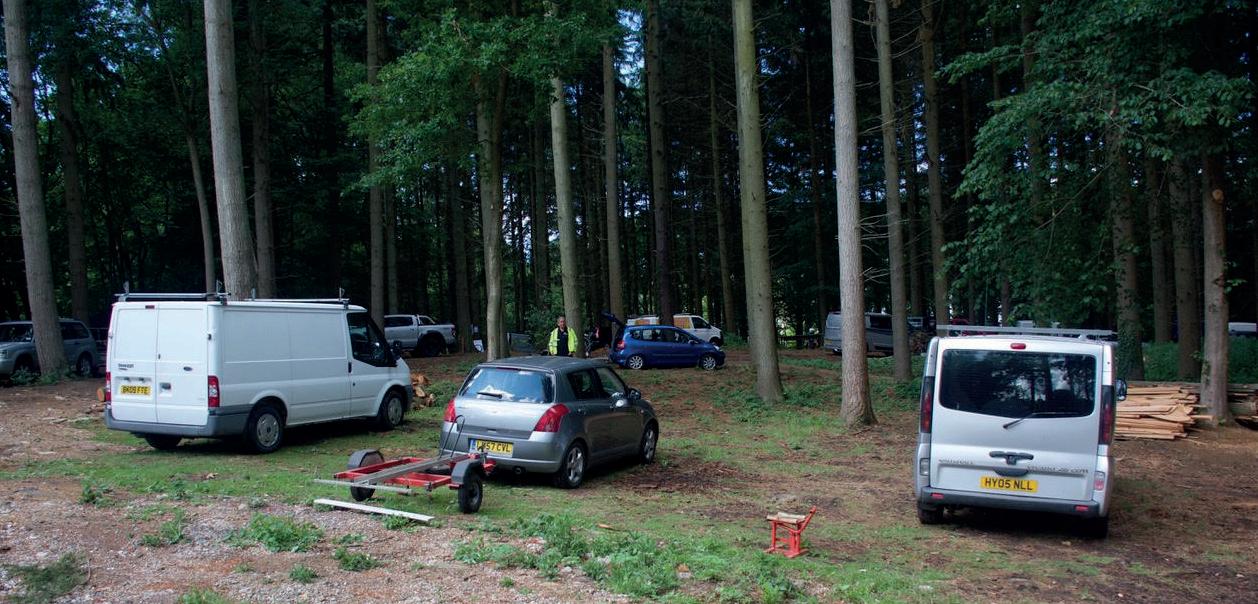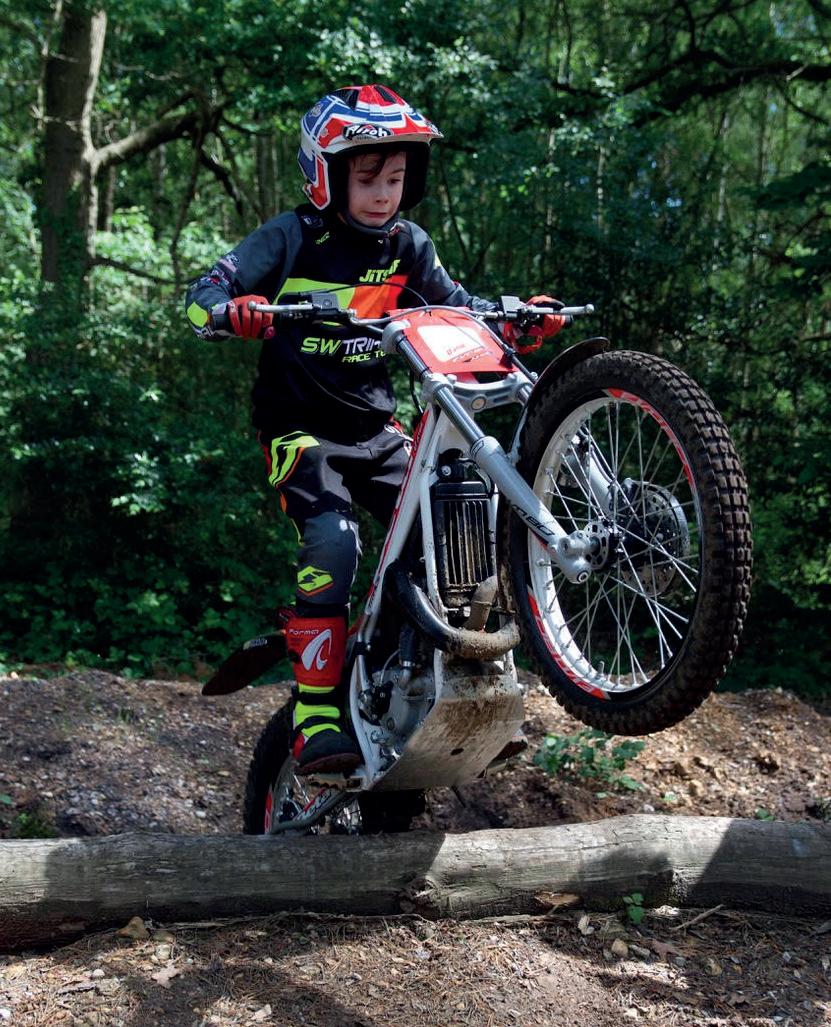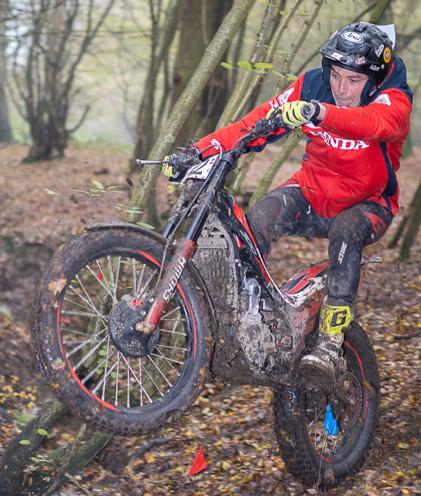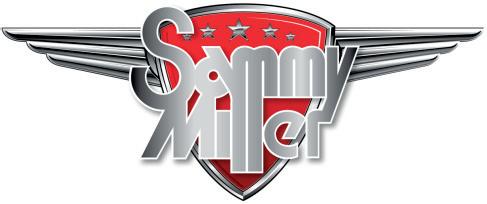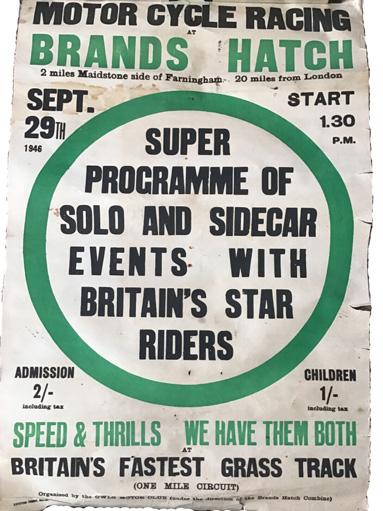
3 minute read
A Brief History of the Owls Motor Club and Brands Hatch
The Owls Motor Club was one of three clubs that organised early motorcycle racing at Brands Hatch, this was grass track racing and ran from 1932 to 1947 with no activity during WWII. After 1947 it became the road race circuit that most of us know today. There was earlier motorcycle racing at Brands Hatch though, "Brands Hatch, the Definitive History" states that it started in 1926, I have ordered an old copy of this book and will see if our club was involved prior to 1932.
The summary below was extracted from Jim Sharp's history of the Owls published in the Owler in 1961.
Advertisement
Easter Monday 1932 was the birth of Brands Hatch and the start of a fabulous era in motor cycling history. A number of clubs had been approached to start grass track racing at this venue, but only three survived, Bermondsey, Sidcup and the OWLS to form the Brands Hatch Combine.
1933 Highlights included a record crowdat Brands of 2,350 – and a talk by Graham Walker at the Clubroom. (Graham Walker was Murray Walker's father and a works rider)
In 1934 Brands Hatch was resurfaced by having 31,000 new turfs laid down on the track (it was a grass track after all) and a new attendance record at Easter of 4,627.
In 1937 Brands Hatch had a record season but rumours of the end of racing at the track were continually floating around. They even talked of laying a road surface for road racing early in 1937.
1938 saw Brands Hatch still going strong with every meeting over-subscribed as far as riders were concerned. This seems the best time to look back on Brands Hatch pre-war. Since the first meeting in 1932 the Grass Track had grown in popularity and the name Brands Hatch became known all over the country as the Grass Track. First class riders who are still remembered now: Jock West, Wally Lock, Les Schwieso, Eric Oliver, Angus Herbert, Harry Ditchburn, Cyril Clisby, Jack Surtees, W.Hallet. What memories these names bring back, no certain winners in any race in those days. Machines were rigid but speeds were incredible. Silver Stars were awarded for riders who had won a race at over 50mph. Ken Goffe a wonderful rider from Blackmore Vale created a stir and started a new era in Grass Track racing. He broke the lap record at 53.21 mph in May 1938 riding a Rudge semi speedway style and his type of riding is still with us today (written in 1961). The team races with Blackmore Vale were run with very keen rivalry. In races of the pre-war period many different makes of machines lined up at the starts. OK, Ariel, Velocette, Norton, Rudge, AJS, Douglas, J.A.P, Excelsior, Coventry Eagle and others. The programme at these meetings usually consisted of 250, 350, 650, Sidecar Scratch, Sidecar handicap, Combine Handicap and Grand Prix Handicap races.
In 1939 Grass Track racing at Layhams Farm and Brands Hatch continued, but with the threat of war things began to dwindle out until that fateful day on September 3rd. The Committee held a meeting on that day and wound up the club for the duration. They offered the clubroom at the Kings Arms, Westerham for War Work, and a letter was circulated to all members suspending all activities. The Committee expressed its hope that all members would do their best for the country and hoped to be meeting again in the near future.
The near future turned out to be June 24th 1945 when a meeting held at the White Hart, Sevenoaks decided to re-start the club on a temporary basis. Later in the year the club really got going once again with Reg Wingett Secretary, E Huntley Chairman and Major Branson as President, in fact no changes.
In 1946 things happened pretty rapidly. Racing resumed at Brands Hatch and crowds of up to 15,000 attended.
In 1947 Bill Boddice rode at Brands on the grass under the "Owls" banner. He was a member for one year only alas. But trouble was brewing at Brands Hatch. The new management could not come to any agreement with the Combine and this was destined to be the last season at Brands run by the OWLS. With grateful thanks to Jim Sharp for providing this information.
Printed by kind permission of the OWLS Motor Club Ltd.

